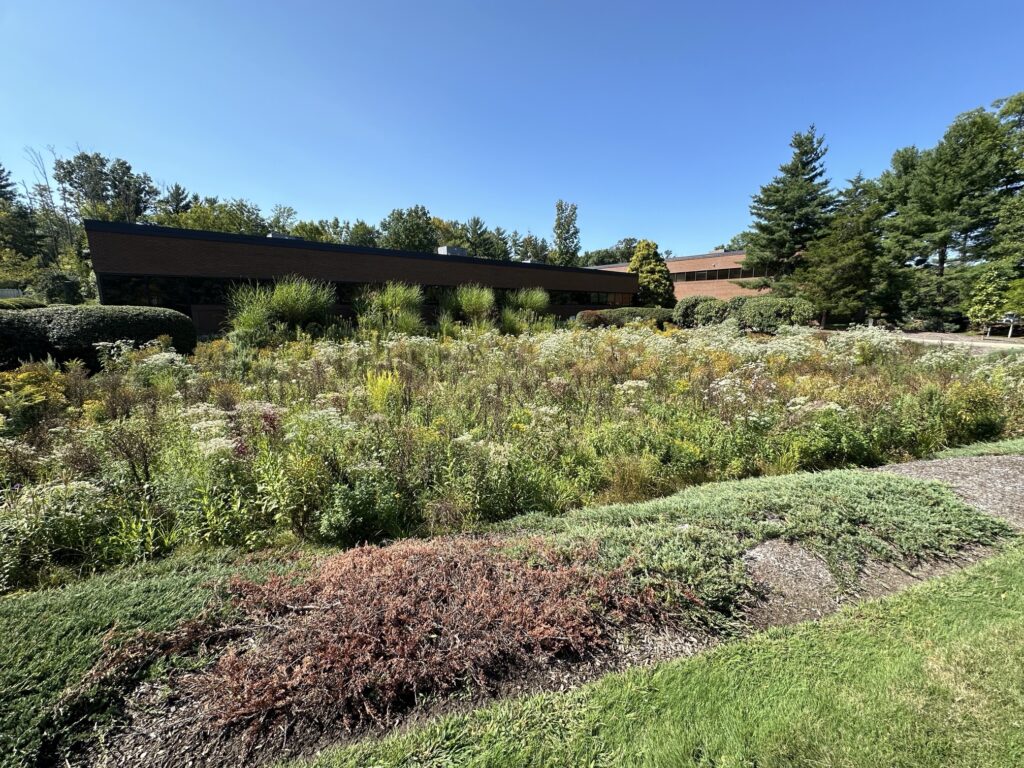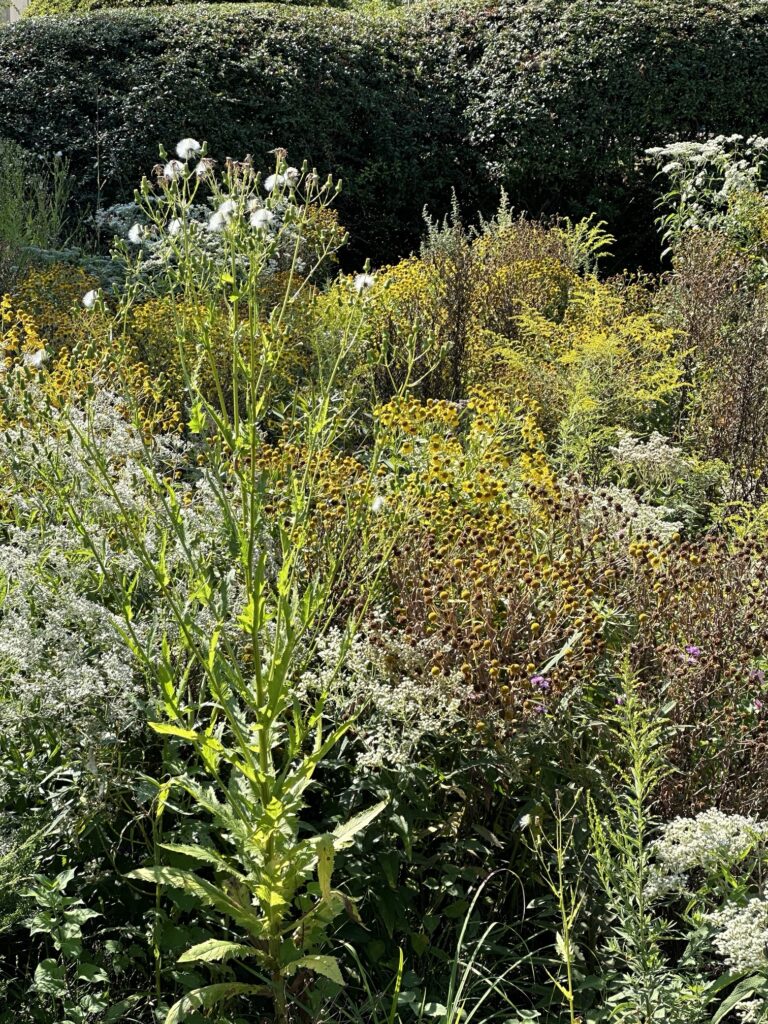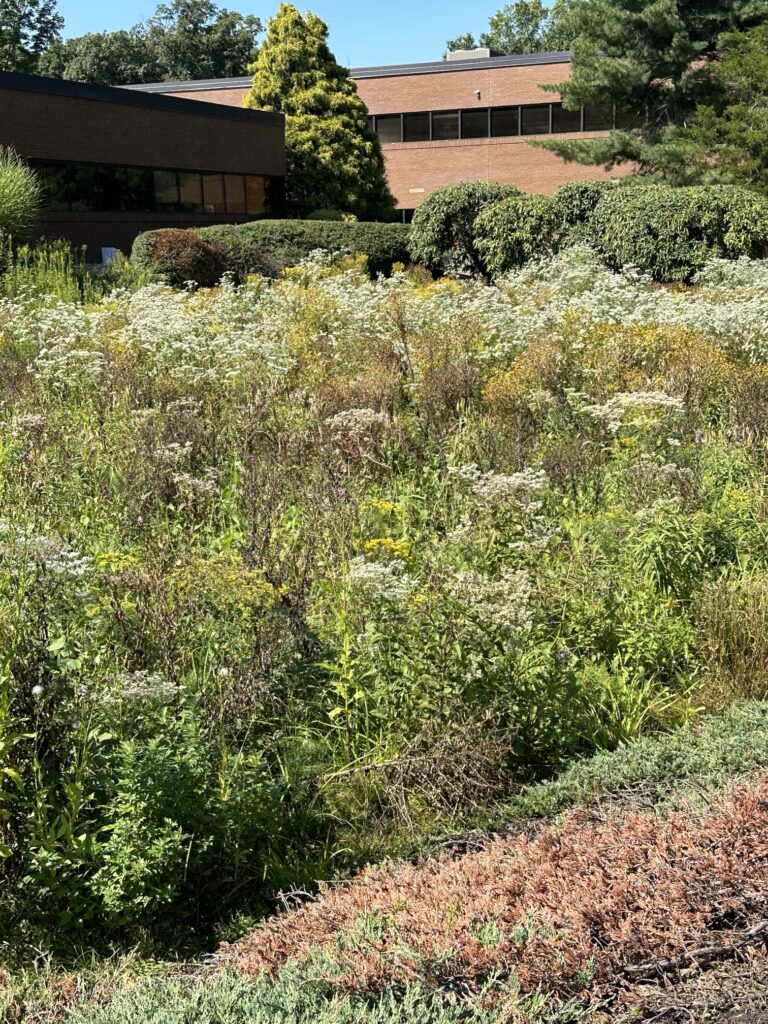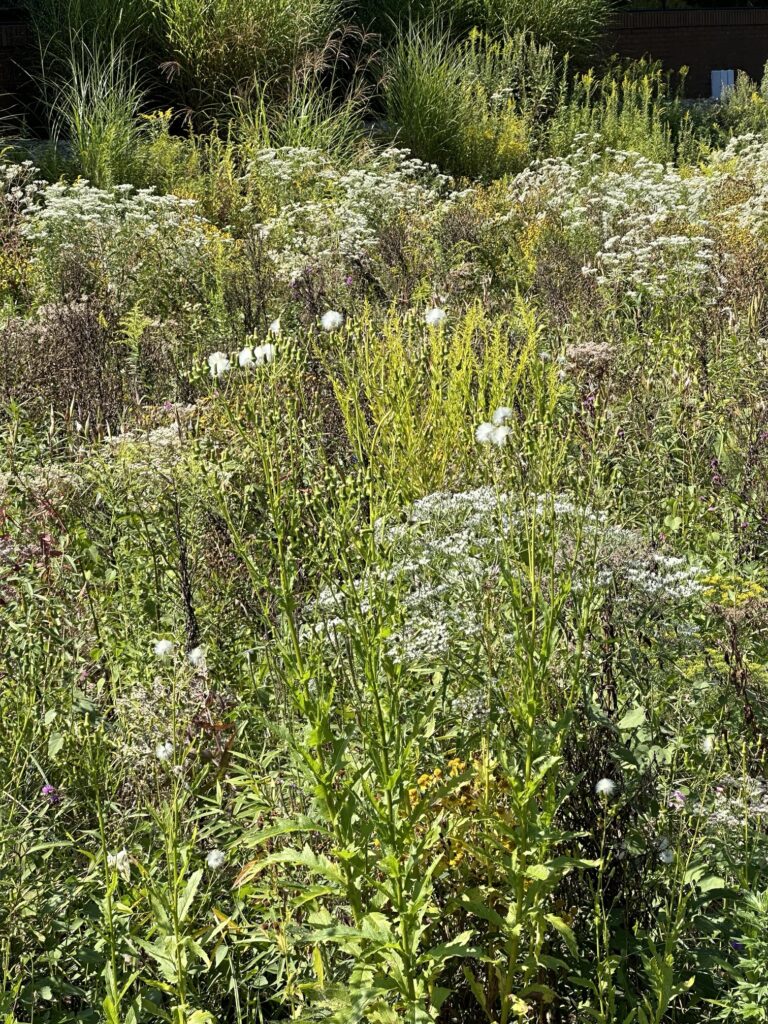Naturalizing the basin at 1000 Herrontown Road
Written by Elana Berk
Recently, we’ve been sharing stories of neighbors who have been using their yards to create green infrastructure features like rain gardens and meadows, but today we’d like to showcase a commercial property that’s also a good neighbor to our town and our ecosystem.
Last week, I visited the office complex at 1000 Herrontown Road, which is comprised of The One and Two Story Buildings and “The Clock Building,” which are owned by The Yedlin Company (TYC.) I watched as one of their grass-covered detention basins was converted into a naturalized rain garden filled with native plants. The Clock Building sits on a property with a hidden feature under the parking lot—a natural stream running directly through the middle of it, underground and out of sight. The practice of encasing streams in pipe to develop on top of them was common in the 1920s but is now a prohibited development practice. When the Yedlin’s acquired the property, the stream had long since been covered over.
“The rain that falls on the property gets collected in this basin and will provide water for all the native plants that are being planted here. Any overflow will go into a drain directly connecting to that underground stream. Actually, you can see where the stream emerges from underground and joins a creek right next to the Bottle King parking lot,” said Charlie Yedlin, the property owner. I took a walk over, and sure enough, there it was, a perfectly tree-lined, babbling brook nestled between the Clock Building’s next-door neighbor’s (temporarily) vacant lot and the Bottle King’s parking lot. A hidden gem of lush, green serenity that surely I had passed thousands of times in my car yet never noticed.

In addition to the naturalized basin, the property is adding approximately 25 new native trees, which will help to replace many of the trees that have been lost to the Ash tree blight.

“I want other property owners to know that it’s doable, and it cost less than I expected. Our ecosystem doesn’t care about property lines,” said Charlie.
This landscaping is green infrastructure. The rain gardens and trees help keep the rain on our properties instead of flooding Princeton’s streets, homes, and our antiquated storm water systems. And it goes without saying that the trees and plants help remove carbon from the atmosphere naturally. The benefits of these actions extend far beyond the property lines.
While much of our town is undergoing necessary re-development to meet our affordable housing obligations, it’s wonderful to see a property like this in-filling lawn spaces with trees and native plants. What once was a sea of grass will now be a haven for pollinators, and the trees will offer a place of shady, peaceful respite for the folks working inside the offices 1000 Herrontown Road.
Finally, I looked at Charlie and asked “So, what made you want to do all this in the first place?” And without a moment of hesitation, he responded, “Because it’s the right thing to do.”





Updates from September 2024
“As individuals we have very limited ability to make an impact on improving the environment, so, if more commercial property owners were to retrofit their existing stormwater basins with native plantings collectively, we can help reduce storm water runoff to our overburdened streams and rivers.”
-Charlie Yedlin, Property Owner

FAQ
Have you noticed any reduction in stormwater
runoff or flooding?
Yes. Although we have had a dry summer I have noticed that when heavy rains occur, the outflow from the upper to the lower basin has been reduced.
What has the maintenance been like?
Very minimal. I think it was mowed once or maybe twice in the past year.
What advice do you have for other commercial
property owners who might be interested in taking
the same action on their property?
Make sure that before you embark on your project do a little homework. Hire a professional that is knowledgeable and experienced with soil conditions and NJ Native Meadow Plantings. You will likely want a Deer resistant rain garden mix for seed. Once the soil has been prepped and seeded that’s about it. It will take one good season for the plants to mature.





